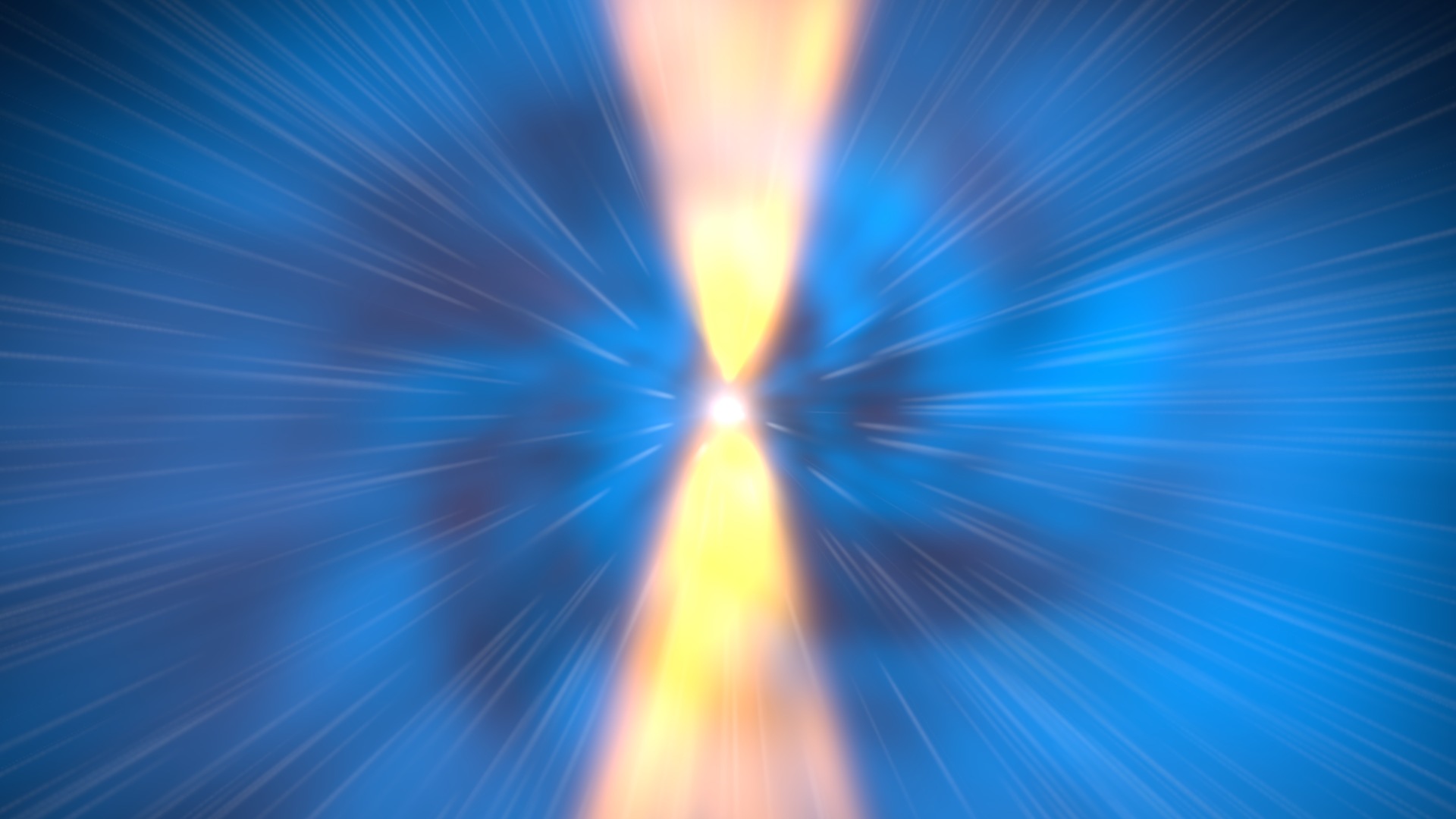AGN Feedback in Markarian 573
Animated illustration of the feedback process thought to be occurring in active galactic nuclei (AGN).
Credit: NASA's Goddard Space Flight Center
This animation illustrates the active galactic nuclei (AGN) feedback process occurring in the galaxy Markarian 573. The AGN itself, a supermassive black hole and its accretion disk surrounded by a dense wide, thick ring of dust and gas, is shown first. The ring, also called a torus, restricts escaping radiation to a pair of conical regions extending above and below its plane. The animation then zooms out to reveal the interaction between radiation escaping from the AGN's conical emitting regions and the gas in the galaxy's disk. The disk gas initially rotates in the galaxy's plane and becomes ionized as it passes through the AGN radiation field. Gas located less than about 2,500 light-years from the AGN accelerates away and forms fast-moving outflows. Gas located at larger distances also becomes ionized, but it is not driven away from the nucleus and remains rotating in the galaxy's disk. These interactions likely explain the spatially resolved structure and motions astronomers observe in other nearby AGN.

This composite view of the active galaxy Markarian 573 combines X-ray data (blue) from NASA's Chandra X-ray Observatory and radio observations (purple) from the Karl G. Jansky Very Large Array in New Mexico with a visible light image (gold) from the Hubble Space Telescope. Markarian 573 is an active galaxy that has two cones of emission streaming away from the supermassive black hole at its center. Several lines of evidence suggest that in active galaxies, a wide, thick ring of cool gas and dust, called a torus, blocks some of the radiation emitted by matter falling into their central supermassive black holes. What astronomers see depends on how the torus is angled toward Earth.
Credit: X-ray: NASA/CXC/SAO/A.Paggi et al; Optical: NASA/STScI; Radio: NSF/NRAO/VLA
For more information, visit: https://www.nasa.gov/chandra/news/archives_come_to_life.html

Markarian 573, imaged here by the Sloan Digital Sky Survey, is an active galaxy located about 240 million light years away in the constellation Cetus.
Credit: SDSS

This illustration shows how the AGN feedback process works in Markarian 573. Gas throughout the disk of the galaxy initially rotates in the disk’s plane. Once the AGN turns on, gas in the spiral arms pass through cones of radiation emitted by the supermassive black hole and become ionized. Gas located less than about 2,500 light-years from the AGN is accelerated away, forming fast-moving outflows (darker red and blue arrows). Gas located at larger distances becomes ionized but remains within the galaxy.
Credit: NASA's Goddard Space Flight Center/Theophilus Britt Griswold

Unlabeled version of above.
Credit: NASA's Goddard Space Flight Center/Theophilus Britt Griswold
Credits
Please give credit for this item to:
NASA's Goddard Space Flight Center, but credit individual content as indicated.
-
Producer
- Scott Wiessinger (USRA)
-
Animator
- Scott Wiessinger (USRA)
-
Scientist
- Travis C. Fischer (USRA)
-
Science writer
- Francis Reddy (Syneren Technologies)
Series
This page can be found in the following series:Release date
This page was originally published on Tuesday, August 8, 2017.
This page was last updated on Thursday, October 10, 2024 at 12:17 AM EDT.
